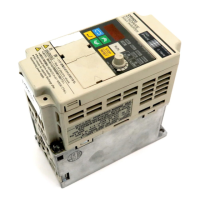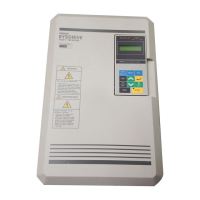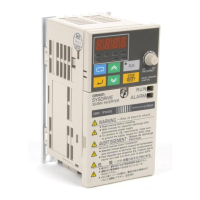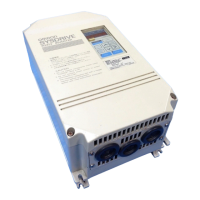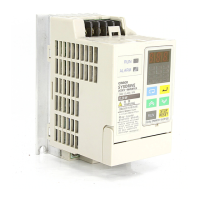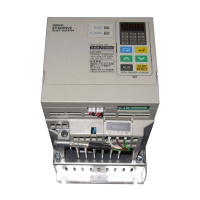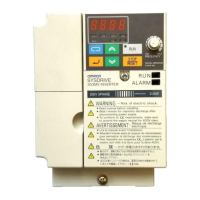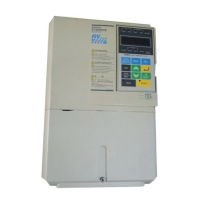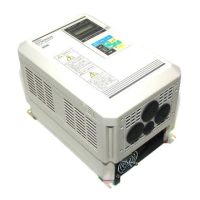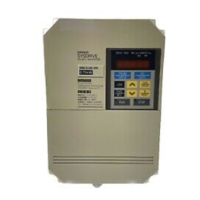2-22
H Wiring on the Output Side of the Main Circuit
D Connecting the Terminal Block to the Load
Connect output terminals U/T1, V/T2, and W/T3 to motor lead wires U, V, and W.
Check
that the motor rotates forward with the forward command. Switch over any two
of
the
output terminals to each
other and reconnect if the motor rotates in reverse with the
forward command.
D Never Connect a Power Supply to Output Terminals
Never connect a power supply to output terminals U/T1, V/T2, or W/T3.
If
voltage is applied to the output terminals, the internal circuit of the Inverter will be
dam
-
aged.
D Never Short or Ground Output Terminals
If
the output terminals are touched with bare hands or the output wires come into contact
with
the Inverter casing, an electric shock or
grounding will occur
. This is extremely haz
-
ardous.
Also, be careful not to short the output wires.
D Do not Use a Phase Advancing Capacitor or Noise Filter
Never connect a phase advance capacitor or LC/RC Noise Filter to the output circuit.
Doing so will result in damage to the Inverter or cause other parts to burn.
D Do not Use an Electromagnetic Switch of Magnetic Contactor
Do not connect an electromagnetic switch of magnetic contactor to the output circuit.
If
a load is connected to the Inverter during running, an inrush current will actuate
the
overcurrent protective circuit in the Inverter.
D Installing a Thermal Relay
The Inverter has an electronic thermal protection function to protect the motor from
overheating.
If, however
, more than one motor is operated with one inverter
or a multi-
polar
motor
is used, always install a thermal relay (THR) between the Inverter and the
motor and set n33 to 2 (no thermal protection).
In
this case, program the sequence so that the magnetic contactor on the input side of
the main circuit is turned off by the contact of the thermal relay.
Design Chapter
2

